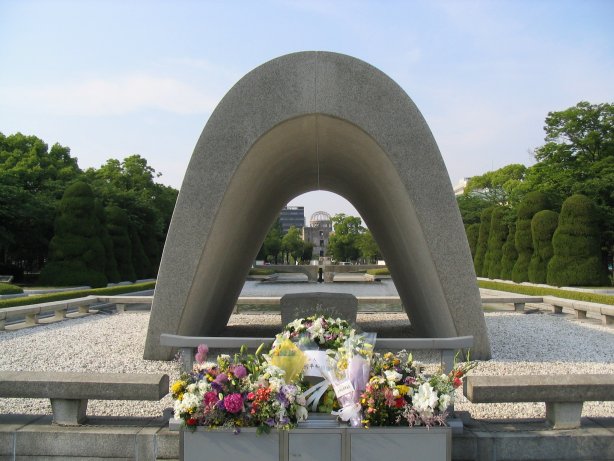 Located on the delta of the Ota River on Hiroshima Bay, and divided into six islands by the seven channels of the river, Hiroshima is the largest city in the Chugoku region of western Honshu, Japan, and capital of the the capital of Hiroshima Prefecture, As of 2007, Hiroshima had a population of 1,159,391.
Located on the delta of the Ota River on Hiroshima Bay, and divided into six islands by the seven channels of the river, Hiroshima is the largest city in the Chugoku region of western Honshu, Japan, and capital of the the capital of Hiroshima Prefecture, As of 2007, Hiroshima had a population of 1,159,391.
On August 6th 1945, during the closing days of World War II, the first atomic bomb used in warfare, "Little Boy", was dropped by the American B-29 Superfortress "Enola Gay" on the city of Hiroshima. Approximately 70,000 people were killed by the bomb, 69% of the city's buildings completely destroyed, and further 6.6% of the buildings severely damaged. A further 60,000 people died from injuries and the effects of radiation during the next few months.
Hiroshima was rebuilt after the end of World War II, principally after 1949, when the Japanese government passed the "Hiroshima Peace Memorial City Construction Law". Also in 1949, the Japanese parliament also declared that Hiroshima would henceforth be a city of peace, and a result the city is today a leading location for peace and social conferences.
The atomic bombing of Hiroshima is commemorated by a variety of memorials and events in the city, principally the Hiroshima Peace Memorial Park. This is a large park in the center of Hiroshima.. The most recognizable symbol of the park is the Hiroshima Peace Memorial, usually known as the "Atomic Bomb Dome" or "Genbaku Dome", which is the preserved remains of what was the Hiroshima Prefectural Industrial Promotion Hall, a building which lay almost directly beneath the site of the atomic explosion.







